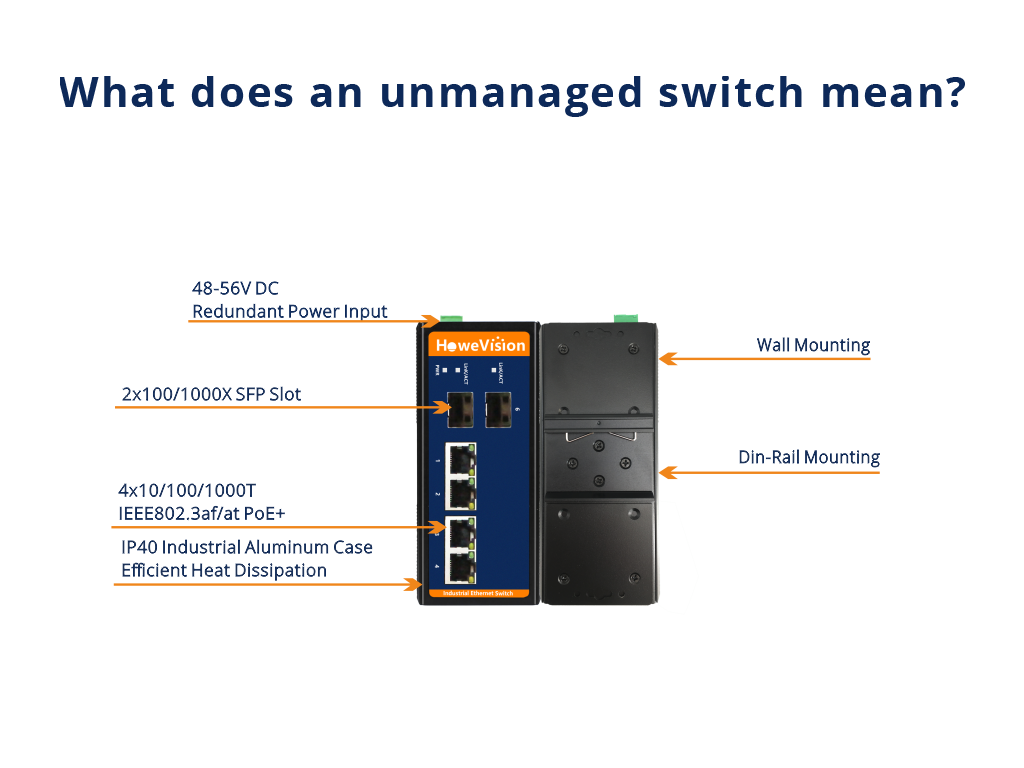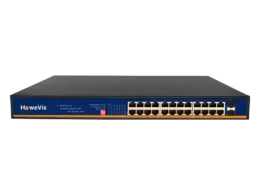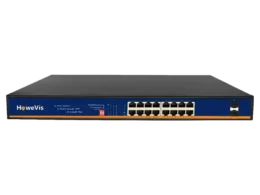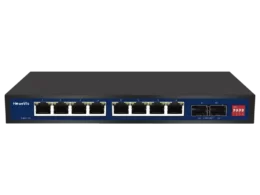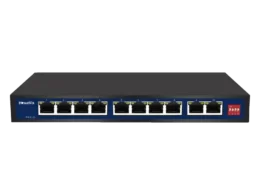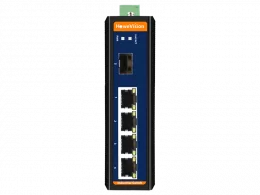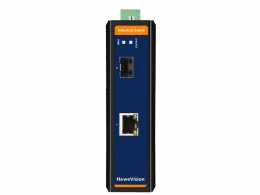The unmanaged switch means a switch that has no custom configurations. In simple words, it is a switch that is plug-and-play. In an unmanaged switch, you don’t have custom configuration and control over the network traffic—no additional features such as routing.
A network comprises what? Switches, devices, routers, suitable? What are switches? Switches are hardware devices that connect the computers over the web.
An unmanaged switch is one of those switches with multiple other types of Ethernet switches.
In actuality, there are three types of PoE switches.
- Managed switches
- Unmanaged switches
- Hybrid or Smart switches.
All these switches work on the principles defined by PoE 802.3 standards.
Our topic is Unmanaged PoE switch. But, if you want a detailed guide over the PoE switches, have a look at—What Type of PoE Switch Should I Buy?
What does an unmanaged switch mean?
What do you think when you read the word “unmanaged switch” for the first time? Maybe a switch that doesn’t offer management features, right? Yes, you are right. Now, I believe it is easier to define the unmanaged switch.
An unmanaged switch is a type of Ethernet switch that connects the devices and enables the transfer of data packets. No additional features such as intelligence of data packets are available. In simple words, it is just a plug-and-play switch with basic functionalities.
How does it work?
Just like a simple switch, it offers basic functionalities such as receiving and transferring data packets. What are data packets? Your emails and data sent from one device to another are in the form of data packets.
You can understand the working mechanism of the unmanaged switch by following points.
- The unmanaged switch receives the data packets from the MAC address of the host device.
- It sends the data packets to the destination MAC address.
That’s how exactly it works—no complex mechanism. Therefore, you can expect simple bridging functionality from the unmanaged switch.
Which type of layer switch is the unmanaged switch?
First, let me introduce the types of two-layer switches.
- Layer 2
- Layer 3
If you have some knowledge about both of these, can you guess the type of unmanaged switch? It would be layer 2. Layer 3 is more advanced and offers routing features that are not possible with unmanaged switches.
What are the peculiar features of unmanaged switches?
Can you differentiate the unmanaged switch from other types? Maybe yes. Here are some features of an unmanaged switch.
- Network Topology
- In a network, three essential layers are there.
- Core layer
- Distribution layer
- Access Layer
- Can you predict the layer of unmanaged switches in the above three switches? I suppose yes if you know these layers. However, the unmanaged switch is usually present in the outermost layer of the network—The access layer. In the access layer, there are only basic functionalities. So, you can also call it an access switch.
- Layer Type
- Same as above. Layer 2 switch can act as a bridge and make sure you get the basic functionalities in the network. The unmanaged switch sends data packets only on the MAC address, just like the layer 2 switch.
- Monitoring
- In an unmanaged switch, you have many restrictions. For example, you have only visualization facilities for the traffic, but you can not manage it.
- Security
- Only basic facilities. You get a secure data connection over basic security protocols such as SSL, SSH, and RADIUS. A lockable port cover ensures no one can penetrate the system. Still, secure enough compared to WiFi networks.
- Capabilities
- An unmanaged switch is very much different from others. It can manage the MAC address tables and get the data packets. Over the given MAC address can enable the traffic and make sure you get a safe data connection. Isn’t significant enough?
- Cost
- Economical switch. Compared to a managed Ethernet switch or smart switch, an unmanaged Ethernet switch is very inexpensive—an excellent solution for simple networks.
If you want a detailed analysis of both managed and unmanaged switches by comparing them, have a look at— What Is the Difference Between Managed and Unmanaged PoE Switches?
What does it do in the network?
You might be thinking about what an unmanaged switch does for you. Am I right? Here is what you can expect from the unmanaged Ethernet switch.
- The unmanaged switch connects multiple devices over the network
- What are the functions of a switch in the network? Connect the devices. Isn’t it something you can expect from the unmanaged switch as well? That’s what I want you to know. An unmanaged switch is a perfect solution for simple networks. You can turn it on and enable the transfer of the data packets from one device to another. Usually, unmanaged switch is part of simple networks requiring bridging features of the switch.
- It can maintain MAC address tables
- The term “MAC” is an abbreviation for “Media Access Control.” In the power over Ethernet or the Internet of Things, each device has its specific MAC address. In simple words, you can consider it a unique identifier for every device. Whenever you transfer the data packets, the unmanaged switches determine the MAC addresses of both devices—host and destination devices. The ultimate goal of the unmanaged switch is to manage the MAC address tables for safe data transfer in the network. Got it?
What are the applications of the unmanaged switch?
Numerous applications. Just like a managed switch, you can find this switch to be affordable for most businesses. That’s why, in simpler networks, you can observe the applications of unmanaged switches. Nevertheless, I have listed some of the significant applications of unmanaged switches.
- In simple networks at home and office, you can use unmanaged switches.
- Surveillance purposes. In the simple system of surveillance IP cameras, you can find the applications of unmanaged switches.
- To simplify the installations of WAP(wireless access points) in the office.
- Used for temporary purposes to test the complex network integrity and understand the working mechanism.
Do I need an unmanaged switch?
Need to manage the traffic? If yes, an unmanaged switch is not something you must look for. So, when is an unmanaged switch required? Pretty good question. Let me tell you the scenario in which an unmanaged switch can be your preference.
For simple networks. A network with the least number of connections. If you have a small network at the home or office, you can purchase the unmanaged switch. A small network might consist of devices up to 3 or 4.
